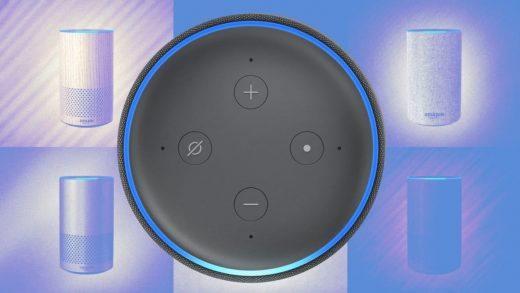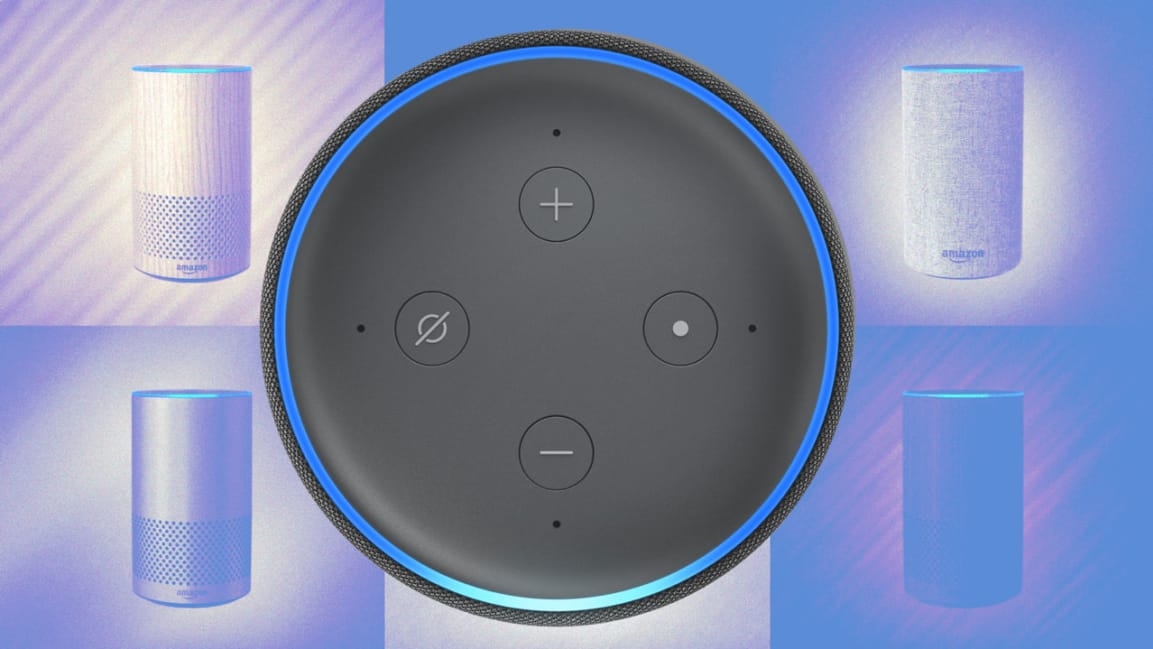Amazon’s three-pronged plan for taking over your home
There are two ways to view Amazon’s lead in the smart home wars.
One involves looking strictly at the numbers. Amazon tells Fast Company that Alexa is now compatible with more than 28,000 devices across 4,500 brands, up from 20,000 devices across 3,500 brands in September. Google Assistant, by comparison, worked with 10,000 devices across 1,000 brands as of October. While there’s some evidence that Google Home is gaining ground in terms of speaker sales share, Amazon is still widening the gap in device support.
The bigger story, though, is how Amazon is accruing all that support in the first place. While Amazon and Google are generally pursuing the same strategy—lure customers in with affordable hardware, then convince other companies to join the ecosystem—Amazon has always been a step ahead in the tools it offers to device makers. This year, Amazon says it’s released more than 20 updates to its developer tools, including some major changes to how device makers make their products work with Alexa.
“By any measure, selection’s gone up dramatically,” says Daniel Rausch, Amazon’s vice president in charge of smart homes. “And that’s really driven by a lot of the innovation we’ve released for developers, and also how much simpler smart home [technology] has become to adopt for customers.”
Better tools
Rausch says that Amazon is hoping to extend its lead in several ways. The first involves getting more kinds of devices to work with Alexa. Until recently, the hooks Alexa provides to third-party developers, or APIs, only addressed specific types of devices, such as light bulbs, door locks, thermostats, and motion sensors. While other device types could still work with Alexa, users had to enable an additional skill and use specific phrasing to control those devices, and there was no way to automate them with Alexa Routines.
This month, Amazon released a new set of APIs that focus on “building block” concepts such as range controllers, mode controllers, and toggles, rather than specific types of third-party products. This allows Moen, for instance, to add better voice control to its smart showers, and Kenmore to add voice control for more wash cycle presets.
“Basically, if a device gets on the internet, Alexa can now control it,” Rausch says.
Meanwhile, Amazon wants to help companies build those devices in the first place with the Alexa Connect Kit. Instead of having to write device firmware from scratch and develop their own control software, device makers can use one of Amazon’s modules, which automatically connect to a suite of Amazon services and includes sample code for integrating with Alexa. (Amazon’s Alexa-enabled microwave, which uses the Connect Kit, is as much a reference design for this concept as it is an actual product.)
The idea isn’t exactly new, as other companies such as Samsung’s Artik also provide end-to-end platforms for device makers. Still, Connect Kit makes adding Alexa support easier, and Amazon covers ongoing cloud storage costs in an up-front fee.
“You don’t have to become an expert in building cloud services or internet security, or the intricacies of building voice control or a setup experience,” Rausch says. “You can adopt this simple microcontroller that comes with the Alexa Connect Kit, and get your device connected, start integration, and be done in months, not years.”
Solving the setup problem
Amazon is also trying to make setting up smart home devices easier on the user side. For instance, Alexa can detect the Amazon Smart Plug automatically so users can start controlling it by voice or through the Alexa app.
“Our goal for smart home overall is that it should be as easy or easier to set up than the old, unconnected analog device,” Rausch says.
That mentality also explains why Amazon built the Echo Plus speaker, which doubles as a smart home hub with a ZigBee radio built in. Many smart light bulbs, motion sensors, and plugs use ZigBee because it requires less power than Wi-Fi and has a longer range than Bluetooth, but controlling those devices over Wi-Fi requires a separate hub or bridge device. While Apple and Google have avoided building their own dedicated home-automation hubs, Amazon dove in because it saw a chance to simplify setup. By controlling the hub, Amazon effectively cuts out any middlemen from the process.
“You can set up a ZigBee light bulb with Echo Plus in a single step. You screw it in, you say, ‘Discover my devices,’ and that is all it takes,” Rausch says.
Beyond basic voice controls
With so many devices now hooking into Alexa, Amazon’s next step involves providing more than just a glorified control panel for turning things on and off.
To that end, Amazon recently started rolling out a feature called Alexa Guard, which can listen for broken glass or alarms from a smoke or carbon monoxide detectors through an Amazon Echo, then send a notification to the user’s phone. Alexa Guard even ties into security systems from Ring (now part of Amazon) and ADT, which can in turn notify emergency services. Rausch says Amazon is “just starting to scratch the surface” on this kind of intelligent monitoring.
Rausch also points to Alexa’s recently launched “Hunches” feature, which can recognize users’ patterns over time and offer to take action when something’s amiss. Alexa might offer to lock the door at the end of the day, for instance, if that’s what a user typically does. Rausch says Alexa will learn new kinds of hunches over time.
“You can imagine all kinds of things it would be great to have a reminder about,” he says. “If an artificial intelligence could tell you when things aren’t just the way you would like them, that would be handy across many domains.”
Hidden Costs
Despite everything Amazon’s done to extend its smart home lead, the company still hasn’t figured everything out.
Privacy remains a concern. The more you use Alexa, the more data Amazon gets to collect, both from raw voice recordings and from behavioral things like music preferences and purchasing habits. You can tell Amazon not to use your voice recordings for product development, and you can delete recordings manually, but there’s no way to have Amazon automatically delete or anonymize old data. For most people, Amazon will retain every voice command they’ve ever given.
Rausch seemed surprised at the suggestion that Amazon might avoid retaining such extensive records.
“That’s interesting, in terms of a discussion point,” he says. “We do retain data to make the service better, and we take that very seriously, but I’ll take that feedback to the team. It’s an interesting question.”
Along the same line, Amazon’s business model for Alexa remains murky. According to The Information, voice shopping hasn’t been a major use case for Alexa, which could put pressure on the company to seek other means of monetization. While Amazon says it doesn’t use customers’ voice utterances for targeted ads, CNBC reported in January that the company has dabbled in sponsored product listings and experimented with targeting ads based on users’ shopping behavior.
Consumers should generally understand how a product intends to make money from them, but that’s not something Amazon is ready to open up about. “We believe and run the business here at Amazon knowing that if we solve hard problems for customers, the rest will follow,” Rausch says. “That really truly is the way we run the business.”
Amazon’s race toward convenience could also inherently lock customers out of competing ecosystems. Buying an Amazon Smart Plug or using an Echo Plus as a hub means giving up compatibility with Google Assistant or Siri. When third-party companies build products with Connect Kit, Alexa integration is automatic, but that doesn’t extend the same privilege to other voice assistants. A future in which customers are stuck with one AI–even when its privacy policies or business model becomes undesirable–doesn’t seem ideal.
Rausch says this isn’t by design. Device makers that use Connect Kit can still integrate with other voice assistants, even if it takes additional work, and they can also use Amazon’s “Frustration Free Setup” process with Alexa even if those products also support Google Assistant or Siri. He also points to the tie-in between Amazon Alexa and Microsoft’s Cortana as an example of how the company supports the idea of a multiple-AI world.
“Our vision is very much like the internet, versus I think the kinds of competition that you see in mobile handsets, for example,” he says. “We believe in allowing for the proliferation and even, in the very near-term, interaction between different AIs.”
That’s comforting to hear, but it doesn’t mean Amazon is slowing down its ease-of-use efforts in the name of interoperability. The rest of the industry, as always, will just have to catch up.
(10)



